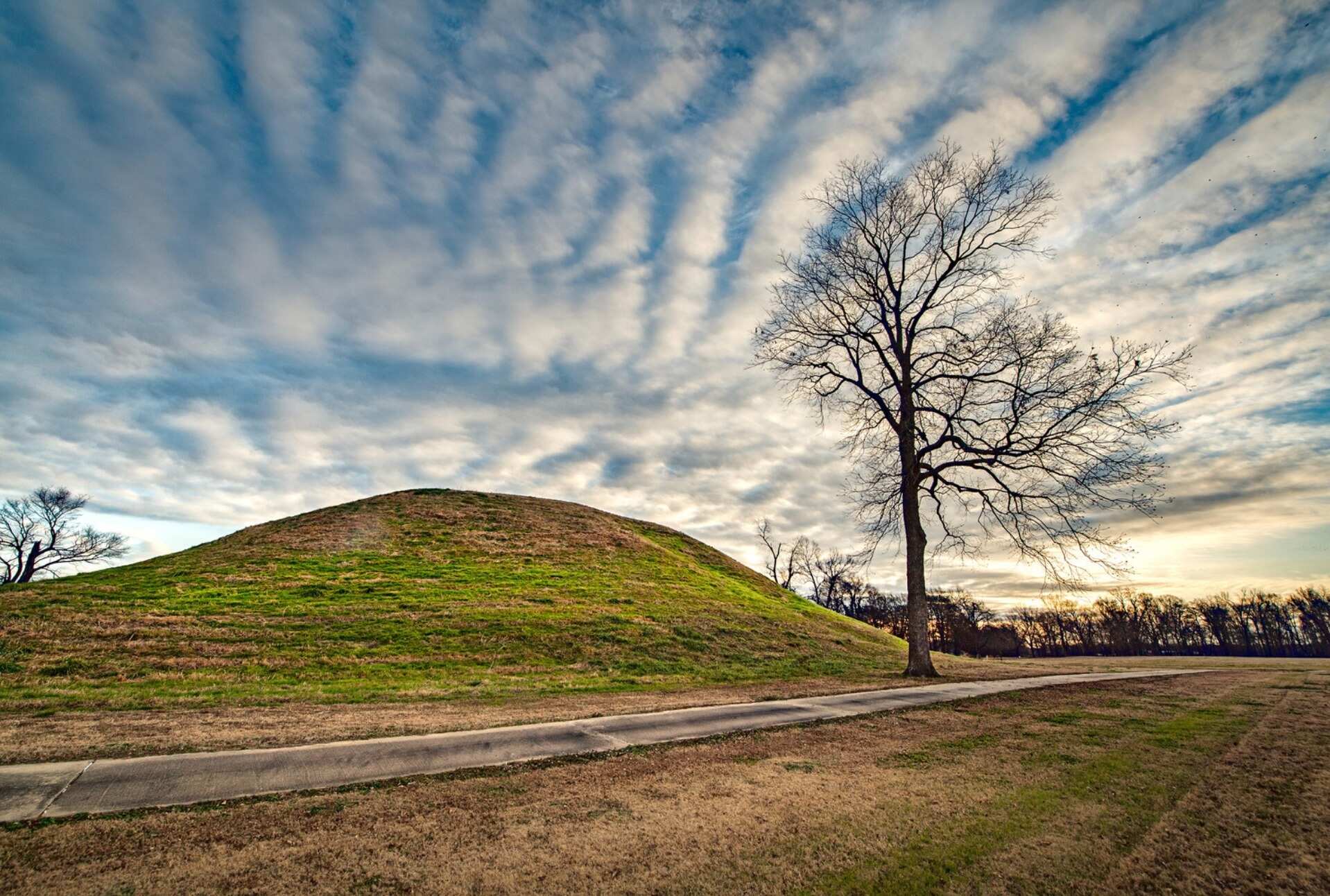Mysteries Of Arkansas’ Toltec Mounds

Have you ever wondered about the ancient secrets hidden in Arkansas? The Toltec Mounds might just be the place to start. These mysterious earthworks, located near Scott, Arkansas, are remnants of a civilization that thrived over a thousand years ago. Despite their name, they have no connection to the Toltec people of Mexico. Instead, they were built by the Plum Bayou culture, a group that lived in the area from 600 to 1050 AD. The site features 18 mounds, with the tallest reaching 49 feet. These structures served as platforms for buildings, ceremonial sites, and possibly even burial grounds. Today, the Toltec Mounds are part of a state park where visitors can walk trails, see the mounds up close, and learn about the people who once called this place home. Whether you're a history buff or just curious, this site offers a glimpse into a world long past.
Discovering the Toltec Mounds
Arkansas holds a secret from ancient times. The Toltec Mounds are a mysterious site with a rich history. These mounds were built by the Plum Bayou culture over a thousand years ago. Let's explore some fascinating aspects of this archaeological wonder.
The Mounds' Purpose
Why were these mounds built? Scholars have debated their purpose for years. Some believe they were used for ceremonies, while others think they served as platforms for buildings. Here are some intriguing features of the mounds:
Mound A: The tallest of the mounds, standing at 49 feet. It might have been a ceremonial center or a chief's residence.
Mound B: This one is smaller but still significant. It could have been used for gatherings or rituals.
Mound C: Positioned near the center, possibly a focal point for the community.
The People Behind the Mounds
Who were the Plum Bayou people? They lived in the area from 600 to 1050 AD. Their society was complex, with skilled artisans and farmers. Here's what we know about them:
Agriculture: They cultivated crops like corn, beans, and squash, which were staples of their diet.
Craftsmanship: Known for their pottery and tools, they created items that were both functional and beautiful.
Trade: Engaged in trade with other groups, exchanging goods like shells and stones.
The Mystery of Abandonment
Why did the Plum Bayou people leave? Around 1050 AD, they abandoned the site. The reasons remain unclear, but several theories exist:
Environmental Changes: Shifts in climate or natural disasters might have forced them to move.
Resource Depletion: Overuse of resources could have led to scarcity, prompting relocation.
Social Factors: Internal conflicts or changes in leadership might have played a role.
Visiting the Toltec Mounds Today
Curious about seeing the mounds yourself? The site is now a state park, offering a glimpse into the past. Here's what you can do there:
Visitor Center: Learn about the history and significance of the mounds through exhibits and displays.
Guided Tours: Join a tour to gain deeper insights from knowledgeable guides.
Nature Trails: Explore the surrounding area, which is rich in wildlife and natural beauty.
The Toltec Mounds are a window into a world long gone. Each visit reveals more about the people who once thrived there.
Discovering the Secrets of Toltec Mounds
Toltec Mounds in Arkansas offers a fascinating glimpse into the past. These ancient earthworks, built by the Plum Bayou culture, stand as a testament to the ingenuity and skill of the people who lived there over a thousand years ago. Exploring the site, visitors can learn about the ceremonial and social practices of this ancient community. The mounds, along with the surrounding landscape, provide valuable insights into the cultural and environmental history of the region.
Visiting Toltec Mounds is not just about seeing historical structures; it's about connecting with a time long gone. The site invites curiosity and reflection, encouraging us to think about the lives of those who came before us. Whether you're a history buff or just someone who enjoys a good mystery, Toltec Mounds offers a unique experience that leaves you pondering the rich tapestry of human history.

